According to a survey conducted by CofaceBDI in collaboration with TheMarker magazine and published in May 2022.
Every year, CofaceBDI conducts a survey in collaboration with The Marker magazine, on the question "Who are the 100 companies that are most worth working for in Israel?"
The leading ten places in the latest survey are occupied (in order) by the following companies: Microsoft, Applied Materials, Salesforce, Cyberark, Direct Insurance, SAP, IAI, Checkpoint, Bank Hapoalim and IEC (click here for the full surveys in the past eight years).
The survey was conducted among about 300,000 employees and is also based on internal surveys of the companies.
To weight the various parameters, a preliminary survey was conducted among more than 2,000 employees who rated the order of importance of the parameters in their eyes.
The results of the preliminary survey are shown in the table below taken from TheMarker magazine of May 2022.
What Is Important to Employees?
In my opinion, the information above is most important for someone who has several job offers from the companies in the 100 list, and is also important for the companies' managements on the 100 list, as part of the efforts to retain employees, and of course to their ego.
For the rest of us, we could try to see what is most important to employees in general and what guides their action.
From the article:
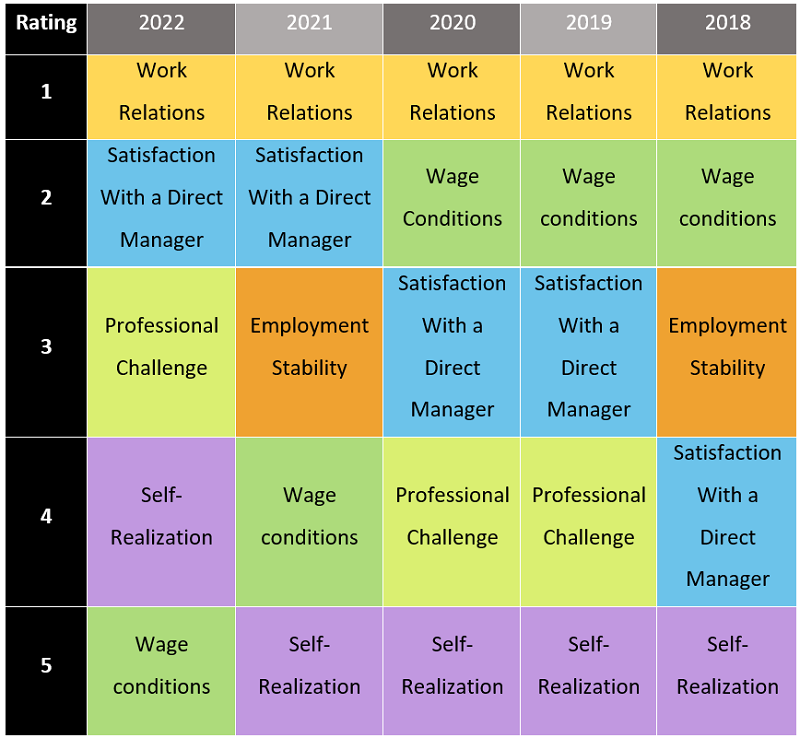
Work relations are the most important variable for employees for the fifth year. In the 2017 survey the most important one was wage conditions and work relations was in second place. Satisfaction with a direct manager is occupying an increasingly important place. In my opinion, it reflects an awareness of our needs as employees.
In the past, employees were willing to accept an "unbearable" direct manager, or put up with the reality of an abusive, unfair, rude and "stupid" one. Generations Y and Z came, and they're unwilling to take things for granted, because "that's the way it is." Older employees also seem to have learned that they don't have to humbly accept and agree with any direct manager, just because he's there.
This is how I interpret the emphasis that this variable has been gaining in increasing importance over the last few years.
What's more, satisfaction from the direct manager is a significant component of what is perceived as "work relationship".
These are the only parameters that are unified across the work segments:
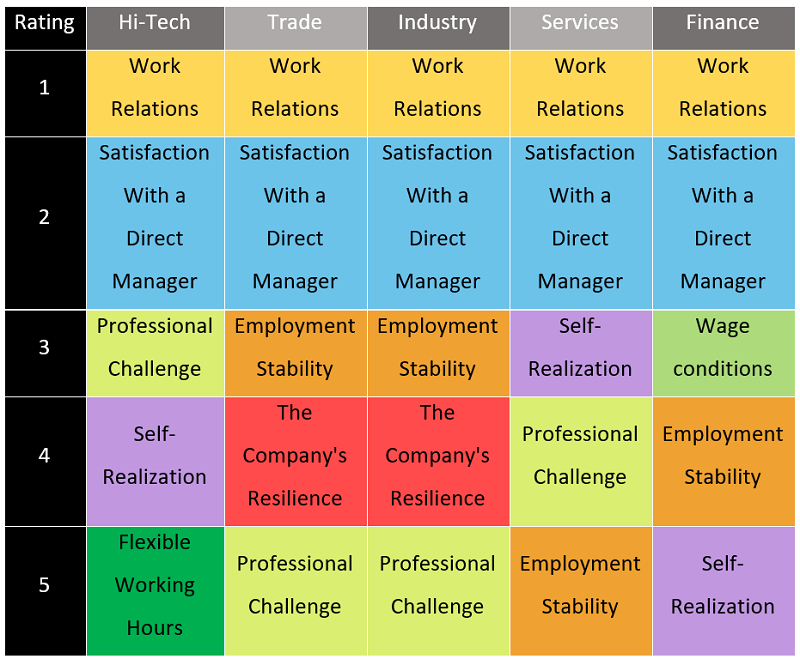
The Year of The Great Migration
Following the uncertainty created by the economic crisis caused by the coronavirus, the parameter of employment stability returned last year to third place. As can be seen in surveys of previous years, the variable of employment stability used to be in third place, or even higher until 2018 and then dropped from the top of the list.
This year this variable dropped again to sixth place. Employees these days are much less concerned or interested in such stability.
Tehila Yanai, co-CEO of CofaceBDI, points out that the latest survey, in which about 300,000 employees participated, is the largest and most comprehensive conducted in Israel and in the labor market.
She adds that the most surprising phenomenon is the decline in the degree of loyalty of employees to the workplace, and their connection to employers. Employees reflect a desire to evolve in new directions, and the decision to move from company to company becomes an easier one.
When asked if they are looking at alternative employment options outside the organization, 44% of survey participants answered in the affirmative, compared to only 33% last year. Almost half of the respondents (46%) marked high-tech companies as a place of employment where they would like to join, compared to 39% last year.
We can see this figure in the following graph:
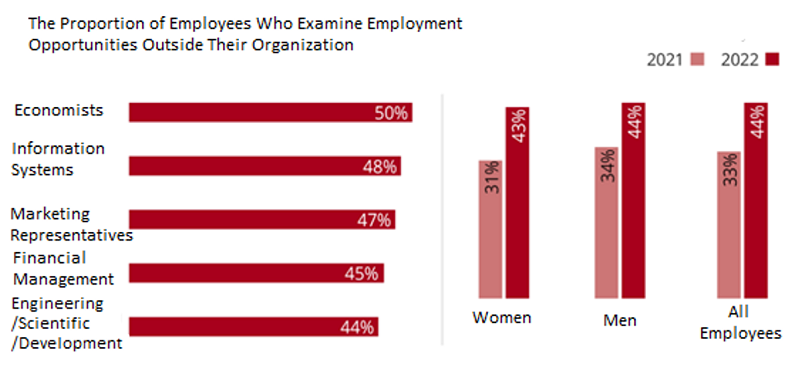
What Are the Reasons for Leaving the Workplace?
Look at the following graph, conducted according to the annual survey among human resource managers in March this year:
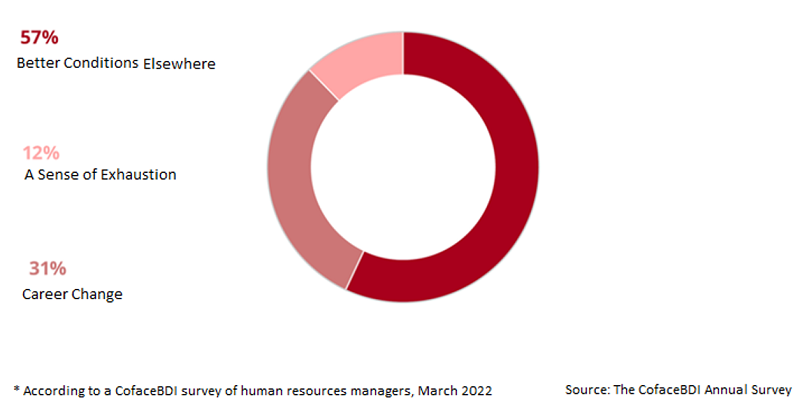
The term "better conditions" doesn’t refer to wages. The "wage conditions" parameter dropped to fifth place, the lowest in five years.
At the same time, other characteristics in the survey indicate that employees feel a decrease in the relations they have in their workplace and the extent of their impact there.
Let’s observe these two graphs below, that show the importance of positive feedback (a decrease of 15% in 2022) and the attention of the direct manager (a decrease of 18% in 2022):
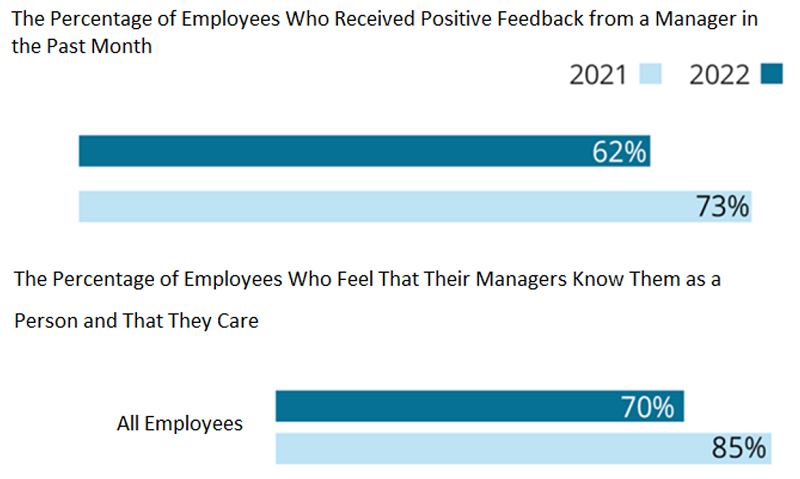
Another important variable is the degree of impact employee feels they have. Influence gives meaning and meaning creates motivation.
The percentage of employees who feel they have an impact in the unit in which they work:
- 2021 – 81%
- 2022 – 67%
Here, too, there’s a large decrease - 17%.
Should This Concern You?
Let's observe the following announcement from the Central Bureau of Statistics:
Table A - Number of Most Wanted (Known) Vacancies - Monthly Average January-March 2022.
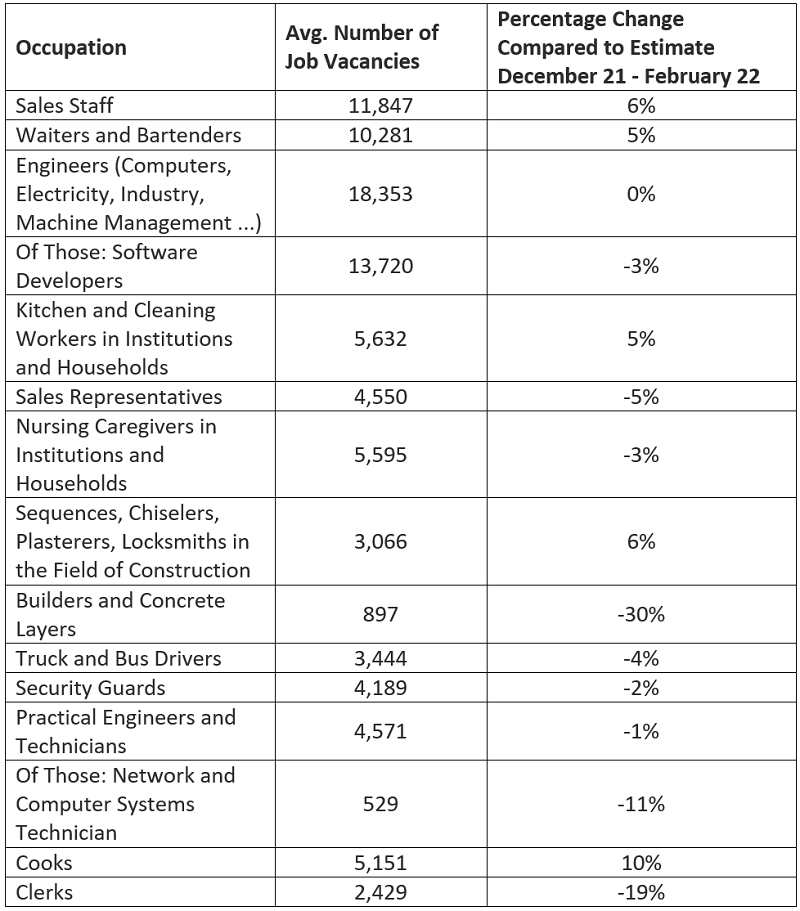
Vacancies are another name for the shortage of workers. As can be seen, the biggest shortage is of engineers, salesmen, waiters and bartenders. In these areas, the share of young workers from Generations Y and Z is very large.
Young workers attach even less importance to workplace stability and is therefore more important to focus on employee retention.
In a retail company I knew, the dropout rate was 240%. Workers came and went and were recruited from all over. It was a decisive failure.
The company appointed a Human Resources Manager. She interviewed and carefully selected new employees. She kept in touch with all of them on an almost daily basis and dealt with their accomplishments. Positive feedback on successes and shares thinking on how to improve.
The recruitment rate was much slower, but abandonment ceased. Employees found satisfaction and meaning in their work and professional achievements improved greatly.
Summary and Recommendation
Tehila Yanai sums up the survey and says that the trend isn’t related only to the workplace and not to the degree of belonging and connection of employees to it. It has to do with something much deeper: a need to make a difference in life and close the gaps between work and leisure. For the time-being this is expressed in only a slight change in the criteria of employees in choosing their workplace. In the past year the importance that employees attach to flexibility in working hours has increased by 5.2%, the image of the company in which they work increased by 3.4% and Self-fulfillment by 1.5%. On the other hand, the importance of wages decreased by 2.9% and stability in the workplace decreased by 2.6%.
Tehila talks about numbers that reflect a change in employees' attitudes and are hard to argue with.
These are the constraints that companies are required to deal with. Like the rain in winter and rate exchange. They are all external constraints that affect, or might affect, profitability. But that doesn’t mean that companies are exempt from the need to profit.
The parameters that are most important for employees in 2022:
- Work relations
- Satisfaction with a direct manager
- Professional challenge
- Self-Realization
All employees are all under the control of the CEO and the VPs under him, and in particular Human Resources Manager.
The CEO can and must influence them all if he wants loyal employees who are connected to the company, who are motivated and who will not leave after a short time.









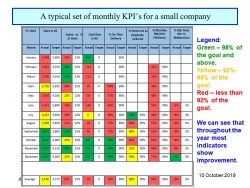


 My First Book: Manage! Best Value Practices for Effective Management
My First Book: Manage! Best Value Practices for Effective Management